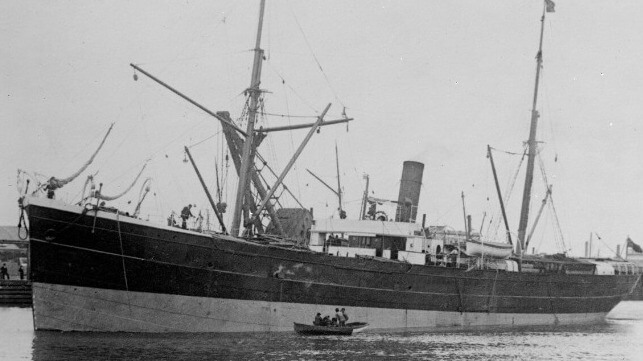Survey Stumbles Upon 120-Year-Old Steamship That Was Lost With All Hands

The mystery of a steamship that was lost off Australia some 120 years ago has finally been resolved. In a development that is expected to give closure to the families of the ship's 32 crew members, authorities in Australia announced the discovery of the wreck of the SS Nemesis, an iron-hulled steamship that was lost at sea in 1904 after being caught in a storm.
The story of the Nemesis is harrowing. On July 9, 1904, the vessel sank off Sydney in a sudden storm. All 32 crewmembers died in the sinking, and the residents of nearby Cronulla Beach endured shocking scenes when bodies started washing ashore. The wheel, hatches and other floating wreckage were also recovered, but the ship’s location remained unknown.
“Around 40 children lost their parents in this wreck and I hope this discovery brings closure to families and friends connected to the ship who have never known its fate,” said Penny Sharpe, NSW Minister for Environment and Heritage.
Built in 1881, the steamship was originally a passenger vessel but was converted and operated as a coal carrier. Nemesis departed Newcastle on her final day, loaded with a cargo of coal for Melbourne. She ran into a southerly gale shortly after departure and was last sighted off Wollongong; she was never seen again for more than a century.
Nemesis has now been identified about 14 nautical miles off the coast in 160 meters of water. A remote sensing company, Subsea Professional Marine Services, first located the wreck by accident in May 2022. The firm stumbled across the site while trying to locate cargo containers lost off the coast of Sydney.
Subsea undertook an initial inspection of the site using a remotely operated vehicle before reporting the uncharted wreck to Heritage NSW, which petitioned Australia’s national science agency CSIRO to gather further data.
CSIRO's research vessel Investigator was able to conduct a detailed seafloor mapping and camera investigation of the wreck while on a transit voyage from Hobart to Sydney in September last year. Using the vessel’s sonar, the team was able to first map the wreck site and surrounding seafloor in high resolution. Then, using an underwater drop camera system, they recorded details of Nemesis' structures, including some of the internal spaces.
With the discovery of the wreck, the authorities intend to find the family members of the lost crew, half of whom were from the United Kingdom and the rest from Australia and Canada. The video imagery collected by CSIRO will also be “stitched together” to create a 3D model of the wreck for further investigations.
There may be many more discoveries to come. The New South Wales coast's waters are believed to contain more than 200 shipwrecks, and only 105 have been found.
